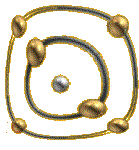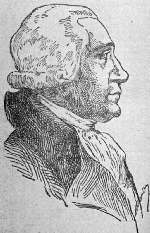AwayMave Home Page | IEPPP Home Page | 406 Module Home Page | University Home Page | VP Home Page

Reason, nature and the human being in the West: Part 5
The 19th Century
AwayMave Home Page | IEPPP Home Page | 406 Module Home Page | University Home Page | VP Home Page |
||
 |
||
Reason, nature and the human being in the West: Part 5The 19th Century |
||
|
Click here for a more detailed account of the changes outlined here
|
The new idea of the living thing was of a set of components which belonged to a whole and which through their interactions preserved the integrity of the whole.
This idea takes shape in the work of Cuvier, approaching from the perspective of comparative anatomy. It was conceived in relation to the animal's gross parts - its organs and organ-systems.
At the end of the 18th Century a new understanding was developing of what underlay the gross structures, replacing the 18th Century notion of a congeries of particles moving about under the influence of a limited number of "forces".
The new understanding grows out of the application of chemical analysis to substances found in or produced by animals and plants. Chemical analysis showed what a substance was made up of, and revealed the proportions of the various components identified. It relied, as far as animal and plant substances were concerned, to begin with on destructive distillation - heating the stuff to the point of burning it and collecting the various products; and then on what was in essence still burning, but burning in a way that permitted close control. The stuff to be analysed was heated with what is known as an oxidizing agent. (Burning is a fast sort of oxidation.) Once again, the products of the oxidation process were collected and weighed.
The use of oxidizing agents, developed to begin with by Lavoisier, revolutionized the accuracy of analysis. Better and better agents were identified, until by the 1830s analysis had been refined into a standard laboratory technique that was reliable and accurate.
In the first decade of the 19th Century therefore you have more and more substances found in living things being subjected to analysis: and the picture begins to emerge, first, of the living thing as producing a range of (now) organic substances, and then as tantamount to chemical laboratories themselves. The living thing came to be seen as a configuration of chemicals which had been produced by the body.
Alexadre Herzen articulates the materialistic conception of the animal towards the end of the 19th Century: "a workshop of material and dynamic transformations, maintaining its physical and chemical constitution through a perpetual exchange of matter and force with the outside world." Herzen, Physiologie de la volonté , Paris, 1874, p.129. Quotations from Herzen taken from Jean Starobinski, Action and Reaction, English edition, New York, 2003, Zone Books. (1st published in French, 1999.) p.147. |
Beyond that, there arose the question of what happened to the chemicals once synthesized, a question that was answered with the thought that they must enter into chemical interactions with their neighbours. So the body becomes thought of not simply as a syntheses and storehouse of chemicals, but as a configuration of chemical processes - and as simply a configuration of chemical processes. That was what an organic body was: that was what life was.
Before the focus had been on structure - the preoccupation of the 18th Century, and one which drew attention to plants in preference to animals. Now the idea of a set of static structures was seen to be illusory, or at least superficial. There were bits of static structure - bark, for example - but those bits were dead. Wherever there was life there was a dynamic process, a network of ongoing chemical processes which produced the appearance of persistent structure at the level of gross observation. The interest in process lead away from the plant to the animal as possessing the greater potential for study.
 |
|
Vicq D'Azyr Thanks to Founders of Neurology exhibition mounted by the University of Illinois |
This new notion of what life was substantiated a newly emphatic distinction between the living and the non-living.
Up to this period there was an articulation of animals, plants and minerals into "three or four kingdoms". Afterwards there were just two - those things that were alive and those things that were not.
"There are only two kingdoms in nature: one enjoys life and the other is deprived of it"
(Vicq D'Azyr, writing in 1786; quoted by Foucault, The Order of Things, as cited above, p.232).
Foucault has a dramatic account of the conceptual shift that took place at the beginning of the 19th Century.
Revised 30:03:04
IEPPP 406 Part 5 Home Page
IEPPP 406 Home Page
Reason, Nature and the Human Being in the West
Part of a module of the MA
in Values and the Environment Lancaster University
Send Mail to the Philosophy
Department